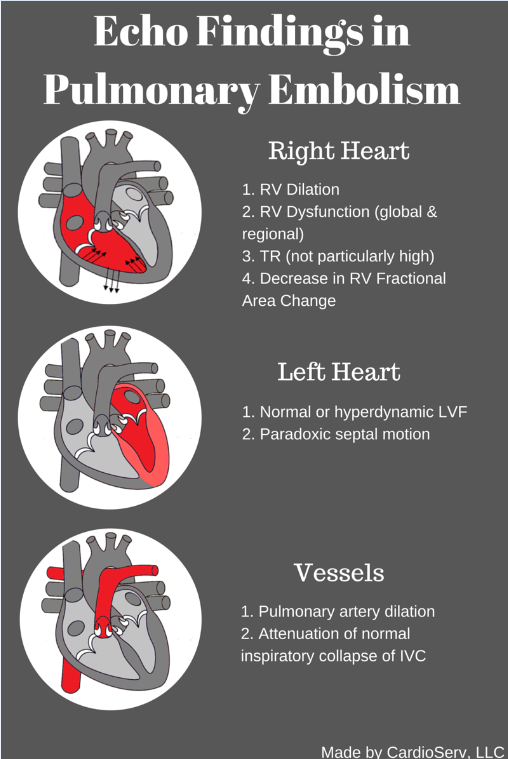Clinical Question-10
Contents
- 1 A 41 years female came to Emmergency department of hospital with left sided chest pain for 3 hours duration which is associated with dyspnoea. Chest pain was increased with breathing. She was on contraceptive pill for last 1 year.
- 2 The most likely diagnosis is which of the following?
- 3 What should be the next appropriate investigation?
- 4 What are the Types of Pulmonary embolism according to the location of embolus?
- 5 Chest pain in Pulmonary Embolism
- 6 Chest pain in Central Pulmonary Embolism
- 7 Chest pain in Peripheral Pulmonary Embolism
- 8 What is the cause of chest pain in Pulmonary Embolism?
- 9 What is McConnell’s sign?
- 10 Echo Findings in Pulmonary Embolism
A 41 years female came to Emmergency department of hospital with left sided chest pain for 3 hours duration which is associated with dyspnoea. Chest pain was increased with breathing. She was on contraceptive pill for last 1 year.
- Blood pressure – 100/60 mmHg, Heart Rate- 110/minute, SpO2 -95%,
- ECG shows anterior T wave inversion
- Troponin is 1.8 [raised]
The most likely diagnosis is which of the following?
[A] HOCM
[B] Acute Coronary Syndrome
[C] Pulmonary Embolism
[D] Cardiac Tamponade
What should be the next appropriate investigation?
[A] Coronary Angiogram
[B] MRI
[C] Spiral CT Chest
[D] Take for Primary PCI
What are the Types of Pulmonary embolism according to the location of embolus?
There are mainly two types of PE according to the location of embolus
Chest pain in Pulmonary Embolism
Chest pain in Central Pulmonary Embolism
Central PE – diagnosed when thrombi were visualized in the main trunk of the pulmonary artery and/or in the right or left main pulmonary arteries.
Chest pain in Peripheral Pulmonary Embolism
Peripheral PE was diagnosed when thrombi were seen exclusively in segmental or subsegmental pulmonary arteries.
What is the cause of chest pain in Pulmonary Embolism?
Chest pain is a frequent symptom usually caused by pleural irritation due to distal emboli causing pulmonary infarction.
Central PE – chest pain may be from underlying RV ischemia [needs to be differentiated from an acute coronary syndrome or aortic dissection]
What is McConnell’s sign?
McConnell’s sign is defined as right ventricular free wall akinesis with sparing of the apex.
Typically this looks as if the apex of the RV is a trampoline bouncing up and down while the rest of the RV remains still. This finding is not sensitive, but in a small study was specific for an acute PE.

RV Enlargement – 27%
RV free wall hypokinesis – 27%
McConnell’s Sign – 20%
Interventricular septal flattening – 18%
60/60 sign – 13%
Echo Findings in Pulmonary Embolism
- RV Enlargement – 27%
- RV free wall hypokinesis – 27%
- McConnell’s Sign – 20%
- Interventricular septal flattening – 18%
- 60/60 sign – 13%




